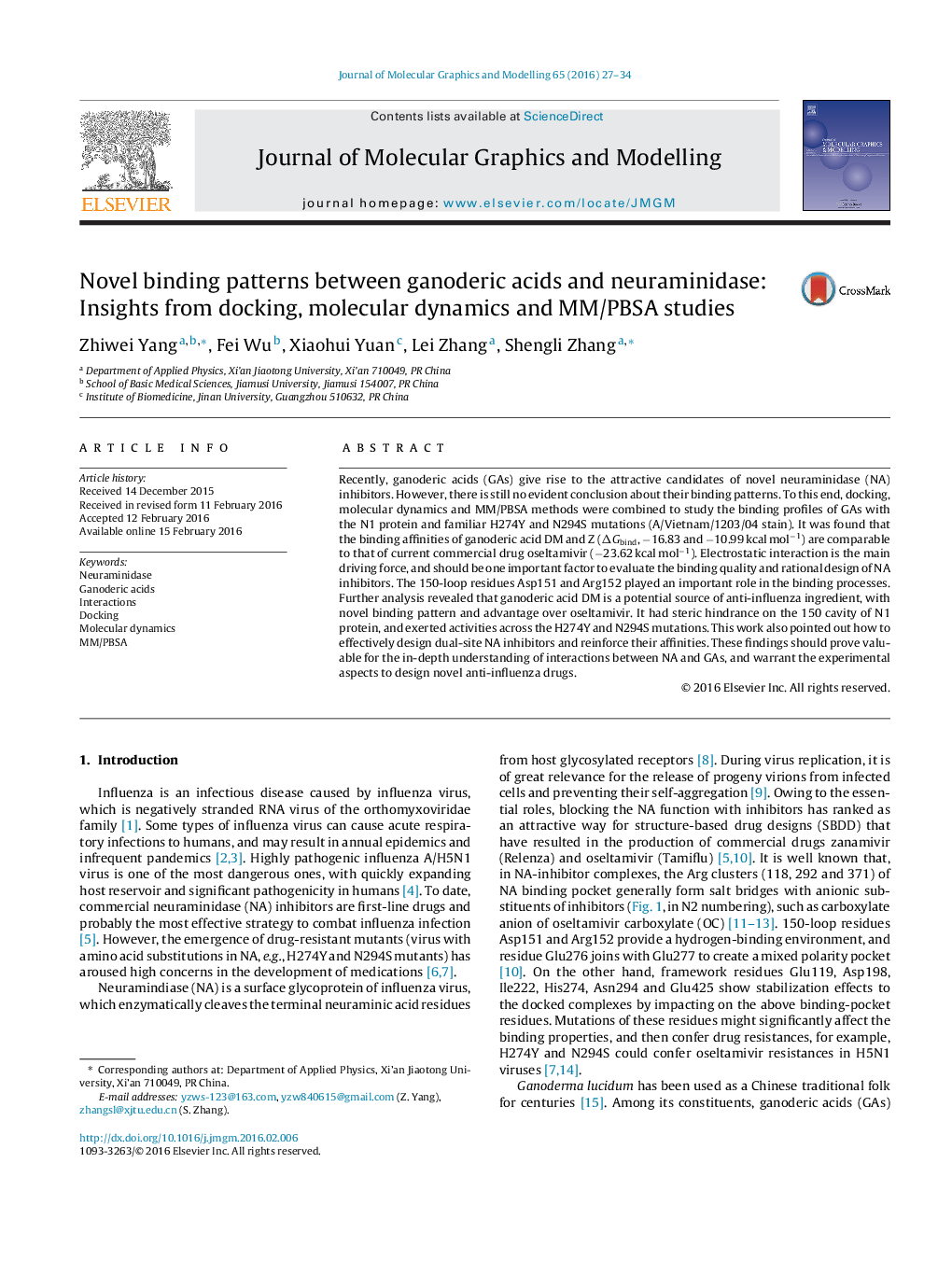| Article ID | Journal | Published Year | Pages | File Type |
|---|---|---|---|---|
| 443414 | Journal of Molecular Graphics and Modelling | 2016 | 8 Pages |
•Binding patterns between ganoderic acid DM/Z and NA subtype 1.•Electrostatic interaction is main driving force for the binding process.•150-loop residues Asp151 and Arg152 are vital for the bindings.•DM has steric hindrance on the 150 cavity, and exerts activities across mutations.•This work also points out how to effectively design dual-site NA inhibitors.
Recently, ganoderic acids (GAs) give rise to the attractive candidates of novel neuraminidase (NA) inhibitors. However, there is still no evident conclusion about their binding patterns. To this end, docking, molecular dynamics and MM/PBSA methods were combined to study the binding profiles of GAs with the N1 protein and familiar H274Y and N294S mutations (A/Vietnam/1203/04 stain). It was found that the binding affinities of ganoderic acid DM and Z (ΔGbind, −16.83 and −10.99 kcal mol−1) are comparable to that of current commercial drug oseltamivir (−23.62 kcal mol−1). Electrostatic interaction is the main driving force, and should be one important factor to evaluate the binding quality and rational design of NA inhibitors. The 150-loop residues Asp151 and Arg152 played an important role in the binding processes. Further analysis revealed that ganoderic acid DM is a potential source of anti-influenza ingredient, with novel binding pattern and advantage over oseltamivir. It had steric hindrance on the 150 cavity of N1 protein, and exerted activities across the H274Y and N294S mutations. This work also pointed out how to effectively design dual-site NA inhibitors and reinforce their affinities. These findings should prove valuable for the in-depth understanding of interactions between NA and GAs, and warrant the experimental aspects to design novel anti-influenza drugs.
Graphical abstractFigure optionsDownload full-size imageDownload high-quality image (207 K)Download as PowerPoint slide
